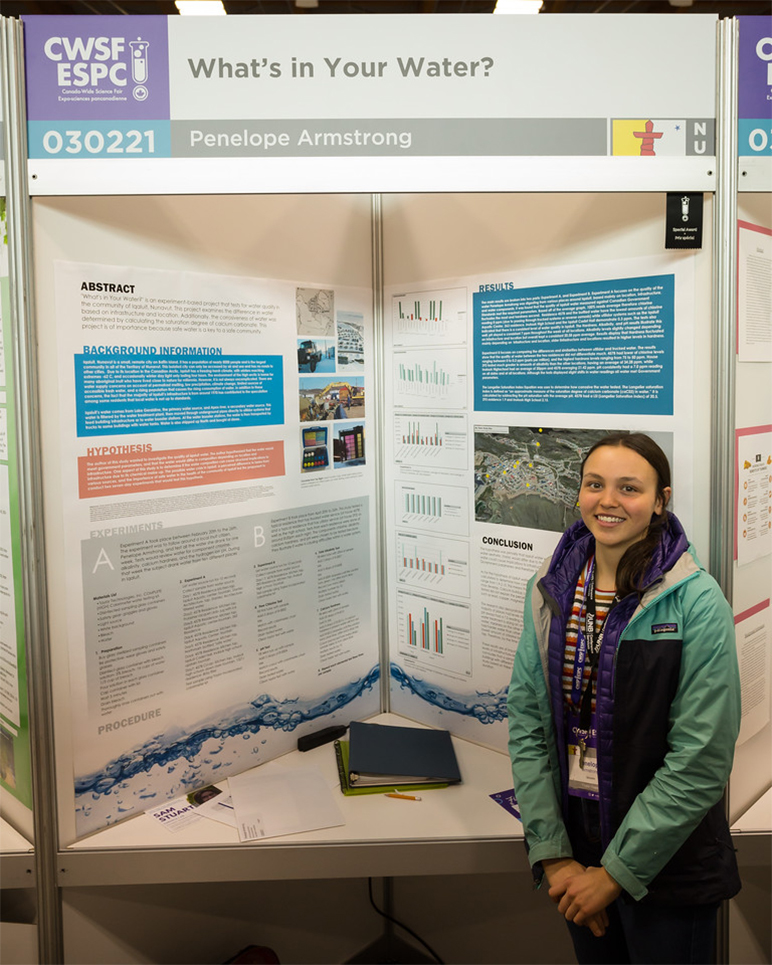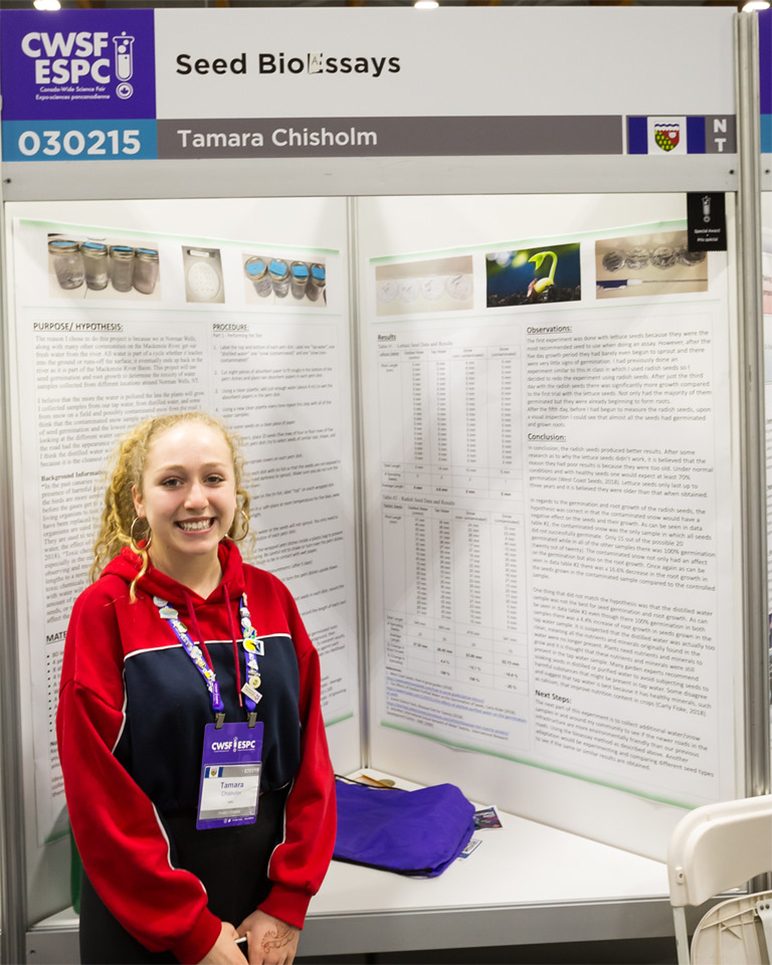Penelope Armstrong and Tamara Chisholm left the Canada-Wide Science Fair as Shad scholarship winners, impressing with their projects that monitored water quality and toxicity. They used STEAM to see firsthand if the water in their communities is safe and free of harmful substances. Find out what winner is training for the Arctic Winter Games and which winner is eager to travel to Thailand and Iceland!
Penelope Armstrong

Q: Tell us a bit about yourself:
A: My name is Penelope Armstrong. I was born and still live in Iqaluit, Nunavut with my parents, younger brother and much of my extended family. I am a Grade 9 student attending Inuksuk High School. I am inquisitive and have a strong desire to learn. When it comes to my favourite subject science, I am fascinated with everything, including space, chemistry and the environment. I spend my free time playing many sports like soccer, basketball, competitive swimming, and figure skating. I can also be found camping at my cabin out on the sea ice, reading a good book, or out and about with friends.
Q: Have you been to the Canada-Wide Science Fair before?
A: This year was the first time I participated in the Canada-Wide Science Fair. It has been a unique and eye-opening event that I am truly grateful to have taken part in.
Q: What is your project?
A: My project “What’s in Your Water?” is an experiment-based project that tests for the water quality in the community of Iqaluit, Nunavut. This project examines the difference in water based on infrastructure and location. Additionally, the corrosiveness of water was determined by calculating the saturation degree of calcium carbonate.
Q: How did you come up with the idea?
A: I was inspired because the arctic is home to many aboriginal Inuit who have lived close to nature for millennia. However, it is not always uncomplicated in today’s world. There are water supply concerns in Iqaluit because of permafrost, low precipitation, climate change, limited sources of accessible fresh water, and a rising population that causes the increased consumption of water. In addition to these concerns, Iqaluit’s infrastructure is quite old, and many community members speculate that our water doesn’t meet government standards. I sought out to create a project that would prove their concerns were ill founded.
Q: What is the real-world issue it helps solve?
A: This project is of importance because water is one of the basic needs for human survival. Humans consume high levels of tap and drinking water that it is necessary to test for contaminants. The safety of my community rests on the quality of our water.
Q: How will you bring this momentum to Shad?
A: I will bring this momentum to Shad by maintaining my interest in STEM and continuing to learn. I will strive to create solutions and make a positive impact.
Q: What will you do between now and Shad 2020?
A: Between now and Shad 2020, I am looking to do several things. Some of which include volunteering or working at the hospital, and training for the Arctic Winter Games which is the world’s largest multi-sport competition for youth in the Arctic. I also hope to further my project for the next Canada-Wide Science Fair.
Q: What does your ideal future look like?
A: My ideal future is a world where materialism won’t be the dominant outlook; where energy and resources are clean and cheap. I would like people to be beyond poverty, and for diversity to be embraced.
Tamara Chisholm

Q: Tell us a bit about yourself:
A: My name is Tamara Chisholm and I’m 15 years old. I’m currently in Grade 10 and attend Mackenzie Mountain School in Norman Wells, Northwest Territories. I live in the Northwest Territories but was born on Vancouver Island in British Columbia. I play soccer and love to travel. I recently visited South Africa and have also been to Costa Rica and Indonesia.
Q: Have you been to the Canada-Wide Science Fair before?
A: This was my first time at the Canada-Wide Science Fair.
Q: What is your project?
A: My project was a seed Bioassay to test for water toxicity.
Q: How did you come up with the idea?
A: I came up with the idea after doing something similar as a lab experiment in my Chemistry class.
Q: What is the real-world issue it helps solve?
A: A Bioassay is an easy test that can be used to test for the presence of toxins in various types of water and other samples.
Q: How will you bring this momentum to Shad?
A: I’m generally an outgoing person and tend to dive into activities I’m involved in. I can adapt when needed and work well with others.
Q: What will you do between now and Shad 2020?
A: Next year, I will be going into Grade 11. I hope to participate and attend the Canada-Wide Science Fair again. This summer, I will be attending a Leadership Development Program with D-Camps Diabetes Canada. I will also be participating in a youth sailing program called SALTs (the Sail and Life Training Society) over the summer.
Q: What does your ideal future look like?
A: My plans include graduating high school and then leaving the Northwest Territories to attend university. I think I would like to study biology and environmental sciences. I also hope to keep traveling; there are a few places on my list, including Thailand, Europe and Iceland.